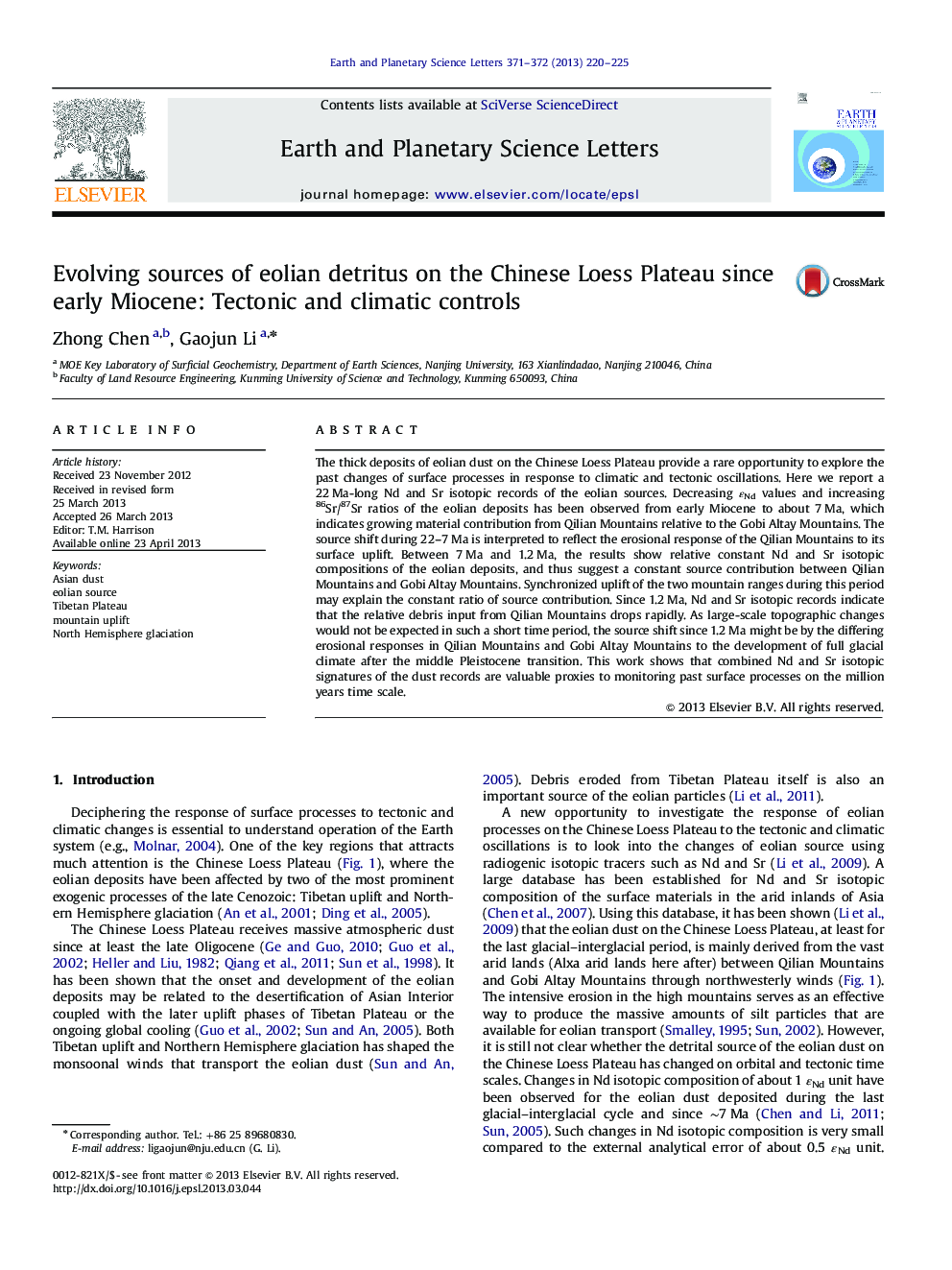| Article ID | Journal | Published Year | Pages | File Type |
|---|---|---|---|---|
| 4677226 | Earth and Planetary Science Letters | 2013 | 6 Pages |
•Nd and Sr isotopic compositions show three stages of source evolution of Asian dust.•The source evolution is related to the erosional response to tectonic and climatic changes.•Nd and Sr isotope ratios of eolian deposits are useful proxies for past surface processes.
The thick deposits of eolian dust on the Chinese Loess Plateau provide a rare opportunity to explore the past changes of surface processes in response to climatic and tectonic oscillations. Here we report a 22 Ma-long Nd and Sr isotopic records of the eolian sources. Decreasing εNd values and increasing 86Sr/87Sr ratios of the eolian deposits has been observed from early Miocene to about 7 Ma, which indicates growing material contribution from Qilian Mountains relative to the Gobi Altay Mountains. The source shift during 22–7 Ma is interpreted to reflect the erosional response of the Qilian Mountains to its surface uplift. Between 7 Ma and 1.2 Ma, the results show relative constant Nd and Sr isotopic compositions of the eolian deposits, and thus suggest a constant source contribution between Qilian Mountains and Gobi Altay Mountains. Synchronized uplift of the two mountain ranges during this period may explain the constant ratio of source contribution. Since 1.2 Ma, Nd and Sr isotopic records indicate that the relative debris input from Qilian Mountains drops rapidly. As large-scale topographic changes would not be expected in such a short time period, the source shift since 1.2 Ma might be by the differing erosional responses in Qilian Mountains and Gobi Altay Mountains to the development of full glacial climate after the middle Pleistocene transition. This work shows that combined Nd and Sr isotopic signatures of the dust records are valuable proxies to monitoring past surface processes on the million years time scale.
